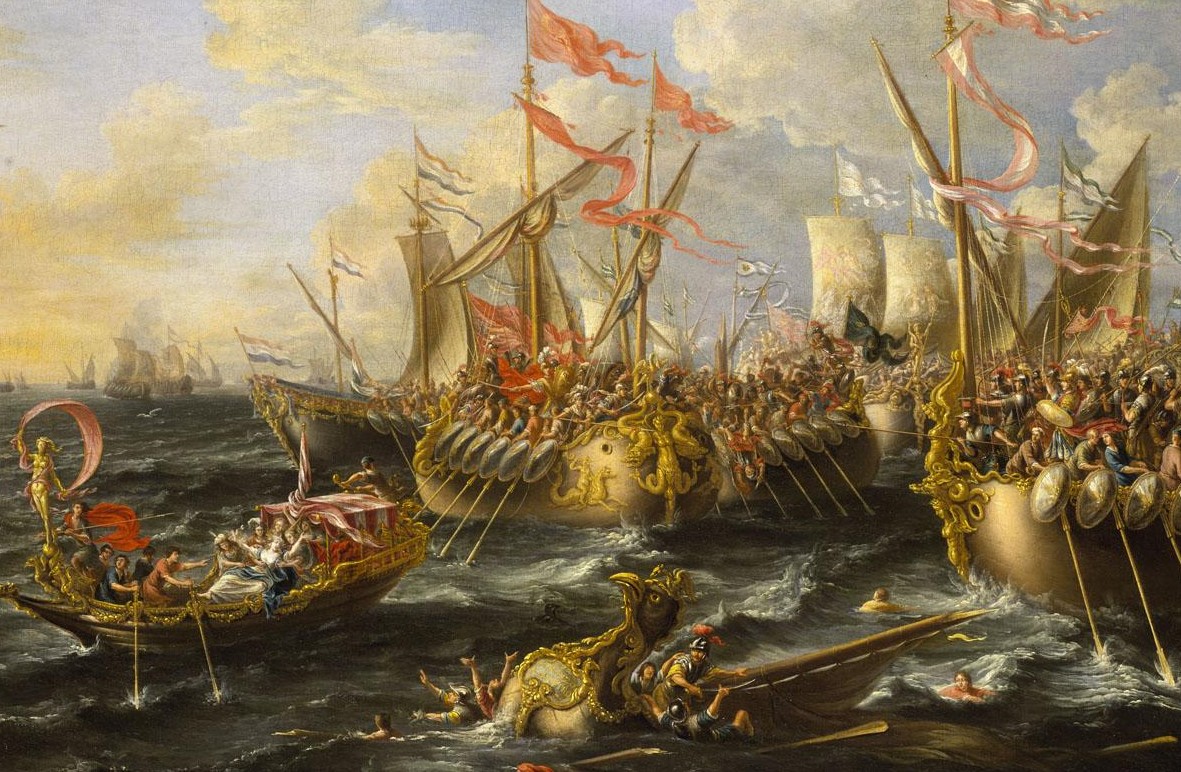“India is the cradle of the human race, the human speech, the mother of history, grandmother of legend, and great grandmother of tradition. Our most valuable and most instructive materials in the history of man are treasured up in India only.” Mark Twain.
Indians are also the original seafarers, and well before the British, India built world’s greatest ships. Surprised? Read on…
“In the 13th century, Marco Polo saw large Indian ships that carried 10 small boats slung on the side with 60 cabins below the main deck, mostly 4-masters and with as many as 14 watertight compartment operated by stout bulkheads.”
The word Navy itself has its origin in Sanskrit word “nau”. Word ‘Navigation’ is derived from Sanskrit word ‘Navagat’. The art of navigation was extremely well-developed in the Indus civilisation thousands of years ago.

In fact, the word Catamaran used for a double shell vessel, is derived from the Tamil word Kattumaram…
Hear this lecture by Nilesh Nilkanth Oak: https://youtu.be/9KwEdN_LGJo for some amazing insights.
Were Europeans better than us before they got motors?
Vasco da Gama did not “discover” India. He merely found the sea route to India by following Indian ships from Zanzibar in East Africa to Kerala. His ship was escorted by five ships belonging to a Gujarati trader Kanha from Africa across Indian Ocean/Arabian Sea to west coast of India. Vasco’s ship was the largest ship built in Europe and Kanha’s ships were 12 times the size of Vasco’s ship!
https://m.timesofindia.com/city/ahmedabad/Gujarati-showed-Vasco-da-way/articleshow/6674395.cms
British, through the Calcutta Gazette on 29th January 1789, actually issued a Proclamation which closed down Indian shipping industry by prohibiting construction of ships in India for overseas trading.

The glorious past:
Muziris was the sea outlet of the Land of Punt/ Ophir/ Sheba– it operated as early as 8,000 BC with huge ocean going wooden ships. Beypore in Kerala was a pioneer in shipbuilding without nails since thousands of years.
Indians were without a doubt pioneers in ship-building and even before the British left India, late Walchand Hirachand began the revival by starting Scindia Shipyard at Visakhapatnam in 1940. It did pretty well till government of a india nationalised it in 1961. Similarly, Mandvi in Kutch, Gujarat had a great ship-building tradition.
Plenty of famous British warships were built in the Indian shipyards. The Saindhav families of modern-day Malwa migrated from Sindh in Pakistan around 800 AD. They say their family elders used to narrate how Saindhav ancestors were pioneers in not only Far seas travel but also experts in shipbuilding.
In our Purans too, we hear stories of tradesman (Settys among others) going to far-off lands for trade, using ships. They would be away for days on end, so obviously, there were cabins and galleys, and servants and all. Both coasts of India had rich trading ties with a lot of countries.
Not just trade, under Rajaraja Chola I and his son Rajendra Chola I, the famous South Indian dynasty became a military, economic and cultural power in Asia. Chola, Chera and Pandya kingdoms were seafarers who expanded their reign over entire South-East Asia.
During the period 1010–1200, the Chola territories stretched from the northernmost islands of the Maldives in the south to as far north as the banks of the Godavari River in Andhra Pradesh.
Raja Raja Chola’s powerful navy conquered areas as far as Vietnam and Kambodia which even today are under heavy Hindu influence.
In fact, Chola kings are widely believed to have built not only the mesmerising architectural marvel Angkor Vat, but entire cities around it which have since gone under the surface and the presence of one such has been confirmed in recent years in the jungles nearby Angkor Vat.
Destroyers, Frigates, Royal Yachts, Decoys, Mechanical Ships, Flame Throwers et al were part of this naval power.
Indian navigation was far superior to the western navigation all along. Read more here:
https://drive.google.com/file/d/1SMcZS8PUxXQErOu5qFbQHWbf4RHNIJTf/view?usp=drivesdk
Also read this article:
https://www.ancient.eu/article/1259/naval-warfare-in-ancient-india/
In the recent centuries, the Maratha empire’s naval capabilities are already well-catalogued.
Despite the partition that saw a big seashore going away in form of Pakistan and Bangladesh, India still has a huge 6,600 km of coastline.
And there is no reason why India should not become mighty again by learning again how to conquer the seas.
All this is now recorded history and should be taught in Indian schools. It will only instil pride in one’s own culture and civilization for future generations and the story must be told to the world through visits to various colleges and universities across countries.
Yet, a lot needs to be done to be able to make India a great maritime power again. Our glorious history is eclipsed by the appalling neglect of the Indian shipping industry by successive governments. For new shipbuilding as well as repairs, we are highly dependent on China, Korea and Japan. Seafarers aren’t even recognised as key workers. Today, thousands of seafarers are stranded because of suspension of international flights in wake of Covid shutdown.
It is time Modi sarkar takes steps to start rebuilding the true Indian maritime power again and not be dependent on Russia, China or Korea.
⁃ Reconstructed from a Twitter conversation by Neeraj Saxena





